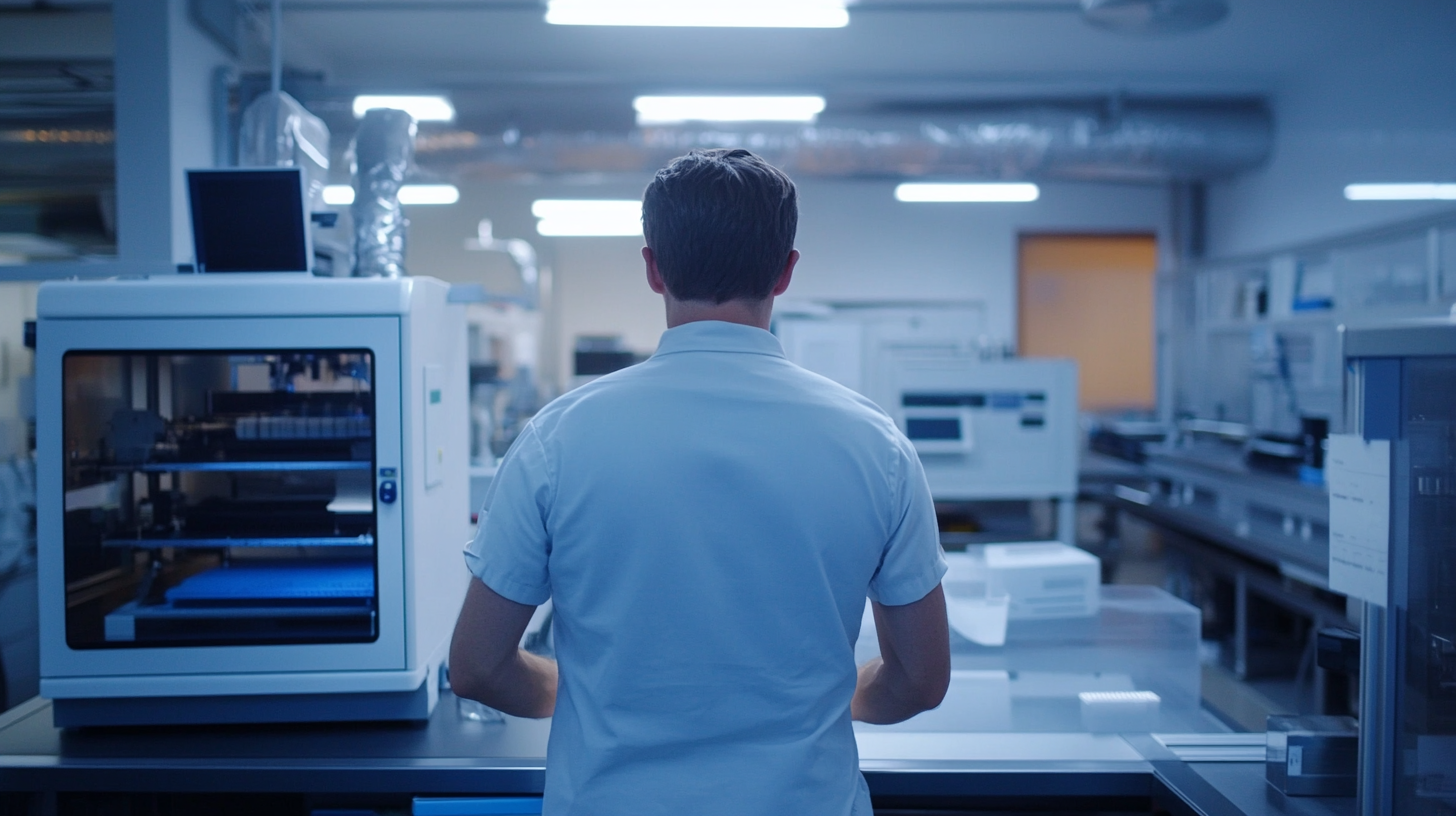Partner Login
Enter your username and password here on order to log in on the partner portal:
No registered partner yet?
Register nowEmpowering Global Industries with Innovative Industrial Inkjet Printing Solutions
In today’s fast-paced manufacturing landscape, the demand for efficient and innovative printing solutions has never been greater. The global industrial inkjet printer market is projected to surpass $3 billion by 2027, reflecting a compound annual growth rate (CAGR) of over 5% from 2020. This growth is driven by the increasing need for high-quality, customizable printing across various applications, such as packaging, textiles, and industrial labeling. With advancements in technology, industrial inkjet printers are becoming essential tools that empower businesses to enhance productivity and meet evolving consumer expectations. By integrating cutting-edge features such as digital printing and improved ink formulations, these solutions not only streamline production processes but also reduce waste and costs, making them indispensable in the quest for sustainable manufacturing practices. As industries continue to embrace the digital transformation, the role of the industrial inkjet printer will be pivotal in shaping the future of global manufacturing.

Innovative Features of Modern Industrial Inkjet Printing Technologies
The landscape of industrial inkjet printing has undergone remarkable transformations, driven by innovative technologies and features that empower global industries. Modern industrial inkjet printers now offer enhanced precision, speed, and flexibility, enabling manufacturers to achieve high-quality results while optimizing operating costs. These advancements cater to a myriad of applications, from packaging and labeling to textiles and product decoration, reflecting the growing demand for customization and rapid prototyping in various sectors.
Additionally, as industries embrace digital transformation and the principles of Industry 4.0, the integration of intelligent automation and data analytics into inkjet printing solutions becomes increasingly critical. This not only streamlines production processes but also provides manufacturers with real-time insights to enhance decision-making and efficiency. As the industrial inkjet printers market is projected to reach $11.22 billion by 2031, these innovative characteristics are set to play a crucial role in driving economic growth, enhancing competitiveness, and shaping the future landscape of manufacturing.
Applications of Industrial Inkjet Printing Across Various Sectors
The applications of industrial inkjet printing are expanding rapidly across various sectors, driven by technological innovations and the growing demand for customized solutions. In the OLED panel industry, inkjet printing technology is on the verge of mass production, showcasing its significant potential in high-end television and smartphone displays. This transition highlights how inkjet printing can revolutionize traditional manufacturing processes, aligning with the broader trends of smart manufacturing and Industry 4.0.
According to recent market reports, the digital manufacturing and inkjet ink sectors are projected to maintain substantial growth through 2032, fueled by the acceptance of intelligent manufacturing technologies. As companies increasingly embrace 3D printing and digital solutions, industries are recognizing inkjet printing’s versatility and cost-effectiveness. For instance, inkjet technology is now being used in textile printing, allowing for intricate designs and sustainable production methods, emphasizing its adaptability across different fields.
**Tips:** When considering industrial inkjet solutions, evaluate your production needs to leverage customization and efficiency. Additionally, stay updated on market trends and advancements to make informed decisions that align with your business goals. Finally, investing in research and development can yield innovative applications, enhancing your competitive edge in the marketplace.
Empowering Global Industries with Innovative Industrial Inkjet Printing Solutions - Applications of Industrial Inkjet Printing Across Various Sectors
| Sector | Application | Benefits | Challenges |
|---|---|---|---|
| Packaging | Custom labeling | Enhanced branding, cost-effective | Ink adhesion, printer maintenance |
| Textiles | Digital textile printing | Vibrant colors, quick turnarounds | Fabric compatibility, ink costs |
| Automotive | Engine part marking | Precision marking, easy tracking | Durability of print, regulation compliance |
| Electronics | Circuit board printing | High detail, reduced waste | Complexity of designs, investment costs |
| Food & Beverage | Date coding and labeling | Compliance, automation | Ink safety, print quality |
Challenges and Solutions in Implementing Inkjet Printing Solutions
Implementing industrial inkjet printing solutions offers numerous advantages, such as flexibility and efficiency, but challenges often arise during the integration process. One significant hurdle is selecting the right technology that aligns with specific business needs. Companies must evaluate various aspects, including speed, print quality, and substrate compatibility. Understanding the unique requirements of each industry is crucial for ensuring the selected solution meets operational demands.
Tip: Conduct thorough research on available inkjet technologies. Engaging with suppliers and industry experts can provide insights that help clarify the best options tailored to your production line.
Another common challenge is maintenance and support. Inkjet systems require regular upkeep to maintain optimal performance and prevent costly downtimes. Establishing a reliable support system, whether in-house or with external partners, can significantly enhance productivity.
Tip: Create a preventative maintenance schedule to address potential issues before they escalate. Training staff on proper operation and routine care can also foster a more efficient printing environment.

The Future of Industrial Inkjet Printing: Trends and Predictions
The future of industrial inkjet printing is bright, characterized by rapid technological advancements and increasing applications across various sectors. As industries continue to seek efficiency and versatility, inkjet printing is poised to revolutionize production processes. Notable trends include the integration of artificial intelligence and machine learning to optimize print quality and reduce waste. This shift not only enhances productivity but also supports sustainable practices, aligning with global environmental goals.
Tip: Embrace automation in your printing processes. Implementing automated systems can significantly streamline workflows, reducing downtime and increasing output.
Moreover, the rise of personalized printing solutions is reshaping consumer expectations. As brands strive to offer unique experiences, inkjet technology is vital in producing customized packaging and labels. This capability not only caters to individual preferences but also enhances brand loyalty and recognition.
Tip: Stay updated on emerging ink formulations. Innovations in ink chemistry are crucial for expanding the range of substrates that can be printed on, allowing businesses to differentiate themselves in competitive markets.
Case Studies: Success Stories with Industrial Inkjet Printing Solutions
Industrial inkjet printing is transforming the global manufacturing landscape, enabling diverse industries to enhance productivity and unlock new opportunities. A recent study revealed that companies integrating industrial inkjet solutions have reported up to a 30% increase in operational efficiency. The ability to switch between different products without extensive downtime has made inkjet technology a preferred choice among manufacturers striving for agility and adaptability.
In one notable case study, a major producer of packaging materials adopted industrial inkjet printing to streamline their production processes. This transition not only reduced waste by 15% but also enabled on-demand customization that significantly improved customer satisfaction. Furthermore, cross-industry examples illustrate the diverse application of this technology, from personalizing consumer goods in retail to producing complex components in aerospace. By leveraging innovative inkjet solutions, companies can achieve targeted enhancements that drive competitive advantages and facilitate growth in a rapidly evolving market.
